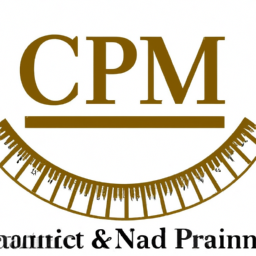Are you a project manager striving to achieve the delicate balance between limited resources and the demands of your projects? Look no further. In the world of project management, finding the perfect equilibrium to ensure project success can be a true art form. Welcome to ‘The Art of Balancing Project Resources: A Guide for Project Managers.’
As a project manager, you understand the complexity of juggling multiple projects, deadlines, and team members, all while working with finite resources. It requires a keen eye for evaluation, prioritization, and optimization to ensure that every resource is utilized efficiently and effectively.
This guide will provide you with a comprehensive roadmap to navigate the challenges of resource management. We will explore how to evaluate your project’s resource needs, prioritize and allocate resources, optimize resource utilization, manage constraints, communicate and collaborate effectively with your team members, and continuously monitor and adjust resource allocation.
By mastering the art of balancing project resources, you will not only enhance your project outcomes but also ensure the satisfaction of your stakeholders. So, let’s dive in and unleash your potential as a resourceful project manager.
Key Takeaways
- Evaluating project resource needs involves identifying resource gaps and determining resource availability.
- Prioritizing and allocating resources requires identifying critical resources, considering project priorities and constraints, and optimizing resource use.
- Resource optimization minimizes waste and involves efficient allocation and maximizing resource productivity.
- Foster open communication and collaboration with team members to ensure resources are utilized effectively.
Evaluate Your Project’s Resource Needs
Understanding and accurately assessing your project’s resource needs is crucial for successfully managing and executing your project. To effectively evaluate your project’s resource needs, you must first identify resource gaps and determine resource availability.
This involves conducting a thorough analysis of the project requirements and the available resources at your disposal. By identifying resource gaps, you can identify areas where additional resources may be required to ensure successful project completion. On the other hand, determining resource availability allows you to assess the current capacity and capabilities of your team and other resources.
This evaluation process provides valuable insights that will guide you in making informed decisions regarding resource allocation. By understanding your project’s resource needs, you can prioritize and allocate resources effectively, ensuring that the right resources are assigned to the right tasks at the right time.
Prioritize and Allocate Resources
To effectively prioritize and allocate resources for your project, you need to first determine the critical resources that are essential for project success.
This involves identifying the key elements and skills required to achieve the project objectives. Once you have a clear understanding of these critical resources, you can then allocate them based on the project priorities and constraints.
This means ensuring that the most important resources are allocated to the tasks that have the highest priority, while considering any limitations or constraints that may impact the resource allocation process.
By following this approach, you can optimize the use of resources and increase the chances of project success.
Determine the critical resources for project success
Identify the key resources you’ll need to ensure the success of your project. Start by identifying key assets such as personnel, equipment, and funding.
Consider the specific requirements of your project and determine which resources are critical for its success. This will help you prioritize and allocate resources effectively. Resource allocation strategies can include assigning the right team members with the necessary skills and expertise, securing the required equipment and technology, and ensuring adequate funding is available.
By determining the critical resources for your project, you can focus your efforts on obtaining and managing these resources efficiently. This will set the foundation for successfully balancing project resources.
In the subsequent section on ‘allocate resources based on project priorities and constraints’, you will learn how to make informed decisions to optimize resource allocation.
Allocate resources based on project priorities and constraints
Ensure that you allocate resources based on the priorities and constraints of your project, as this is crucial for its success and can result in a 30% increase in overall project efficiency.
Resource optimization plays a significant role in project management, and effective resource allocation strategies can make a substantial difference in achieving project objectives.
By analyzing the project’s priorities and constraints, you can determine which resources are essential to meet the project’s goals. This analysis helps you identify critical resources that require special attention and allocation.
Allocating resources based on project priorities ensures that the most crucial tasks receive the necessary resources, increasing the chances of success. Moreover, considering project constraints, such as budget limitations or time constraints, helps you allocate resources efficiently, avoiding wastage.
By optimizing resource utilization in this manner, you can maximize project efficiency and achieve better outcomes.
Optimize Resource Utilization
To optimize resource utilization, you need to efficiently allocate resources to minimize waste. By carefully assessing the needs of each project and assigning resources accordingly, you can avoid unnecessary duplication or underutilization of resources.
Additionally, implementing strategies to maximize resource productivity, such as providing training and support to team members, can further enhance the efficiency and effectiveness of resource utilization.
Efficiently allocate resources to minimize waste
Maximizing resource allocation to reduce waste can be a game-changer for project managers. By efficiently allocating resources, project managers can ensure that each resource is utilized to its fullest potential, minimizing any unnecessary waste. Resource optimization is crucial in achieving project goals within budget and timeline constraints. To help you understand the importance of efficient resource allocation, here is a table showcasing different resource allocation strategies:
| Resource Allocation Strategies | Description |
|---|---|
| 1. Load leveling | Spreading resource demands evenly over time. |
| 2. Resource leveling | Adjusting resource assignments to balance workload. |
| 3. Critical chain method | Focusing on resource dependencies to optimize allocation. |
| 4. Agile resource allocation | Flexible allocation based on changing project needs. |
| 5. Outsourcing | Utilizing external resources to supplement in-house capabilities. |
By implementing these strategies, project managers can maximize resource productivity and minimize waste. This sets the stage for the subsequent section on implementing strategies to further enhance resource efficiency.
Implement strategies to maximize resource productivity
By implementing effective strategies, project teams can significantly boost resource productivity and achieve maximum efficiency. Strategies for resource optimization can help project managers identify areas of improvement and implement changes that enhance resource efficiency.
One key strategy is to conduct a thorough analysis of resource allocation and utilization. This involves assessing the workload of each team member and redistributing tasks to ensure a balanced workload and avoid overburdening certain individuals.
Another strategy is to prioritize tasks based on their importance and urgency, allowing resources to be allocated more effectively.
Additionally, project managers can implement tools and technologies that automate repetitive tasks, freeing up resources to focus on more critical activities.
By adopting these strategies, project teams can optimize their resources and improve overall productivity.
Moving forward to the next section about managing resource constraints, it’s crucial to have a plan in place to handle potential challenges and limitations.
Manage Resource Constraints
Juggling limited resources can be overwhelming, but you must find creative ways to overcome these constraints and deliver successful projects. Resource optimization is crucial in managing resource constraints. It involves identifying the most efficient and effective use of resources to maximize productivity.
One strategy is to prioritize tasks based on their importance and allocate resources accordingly. By focusing on critical activities, you can ensure that limited resources are utilized where they will have the greatest impact.
Another approach is to explore alternative resource allocation strategies, such as outsourcing or partnering with external vendors, to supplement your existing resources. This can help alleviate resource constraints and provide additional expertise or capacity.
Effective resource management requires constant monitoring and adjustment to ensure that resources are being utilized optimally. By employing resource allocation strategies and continuously evaluating resource usage, project managers can navigate resource constraints and deliver successful outcomes.
In the subsequent section about ‘communicate and collaborate with team members,’ it is essential to foster open lines of communication and encourage collaboration to ensure that resources are effectively utilized and aligned with project goals.
Communicate and Collaborate with Team Members
To effectively manage resource constraints, you need to foster open lines of communication and encourage collaboration with your team members. This ensures that everyone is working towards the same project goals.
For example, imagine you’re leading a software development team and need to coordinate the efforts of designers, developers, and testers to meet a tight deadline. By creating a collaborative environment where team members can openly communicate and share ideas, you can optimize resource utilization and increase the chances of project success.
Effective communication strategies are vital for overcoming resource constraints. This includes regular team meetings, clear project objectives, and transparent expectations.
Collaborative problem-solving allows team members to pool their expertise and find innovative solutions to resource limitations.
Implementing these strategies will help you effectively manage resource constraints and ensure project success.
Moving forward, it’s important to monitor and adjust resource allocation to maintain optimal project performance.
Monitor and Adjust Resource Allocation
Keep an eye on your resource allocation, making sure you don’t inadvertently turn your team into a bunch of overworked zombies, desperately searching for brains… I mean, resources. Resource optimization techniques are crucial for project managers to ensure a smooth workflow and efficient project delivery.
Tracking resource utilization is essential in identifying potential bottlenecks and making necessary adjustments. Here are four key techniques to optimize your resource allocation:
-
Prioritize tasks: Assign resources based on task importance and urgency to ensure the right people are working on the right things at the right time.
-
Regularly review workload: Continuously monitor resource allocation to identify workload imbalances and redistribute tasks if necessary.
-
Utilize technology: Leverage project management tools to track resource utilization in real-time, enabling better decision-making and resource allocation adjustments.
-
Foster collaboration: Encourage open communication and collaboration among team members to ensure effective sharing of resources and avoid duplication of efforts.
By implementing these techniques, project managers can effectively monitor and adjust resource allocation, leading to improved project outcomes and a happier, more productive team.
Frequently Asked Questions
How can project managers determine the specific resource needs of their projects?
To determine the specific resource needs of your projects, project managers must engage in resource allocation and estimation.
Resource allocation involves identifying and assigning the necessary resources, such as personnel, materials, and equipment, to different project tasks.
Resource estimation, on the other hand, requires accurately predicting the quantity and duration of resources required for each task.
By effectively managing resource allocation and estimation, project managers can ensure that the right resources are available at the right time, maximizing project efficiency and success.
What factors should project managers consider when prioritizing and allocating resources?
When prioritizing and allocating resources, project managers must consider various factors. Firstly, they should assess the resource allocation based on the specific needs of the project. This involves evaluating the project’s goals, objectives, and requirements.
Additionally, project managers need to consider resource availability, including the skills and expertise of team members, equipment, and budget constraints. By carefully considering these factors, project managers can effectively allocate resources to ensure project success.
Are there any strategies or tools available to optimize resource utilization within a project?
To optimize resource utilization within a project, you can employ various strategies and tools.
Resource optimization strategies involve carefully analyzing and prioritizing tasks, effectively allocating resources, and continuously monitoring and adjusting resource allocation as needed.
Additionally, resource utilization tools like resource management software and time tracking tools can help streamline resource allocation and ensure optimal utilization.
By implementing these strategies and utilizing these tools, you can maximize efficiency and productivity within your project.
How can project managers effectively manage resource constraints and overcome challenges?
To effectively manage resource constraints and overcome challenges, project managers must prioritize resource allocation based on project requirements and constraints. This involves analyzing the project scope, timeline, and available resources to identify potential bottlenecks or limitations.
By developing a comprehensive resource management plan, project managers can allocate resources efficiently and optimize their utilization. Additionally, effective communication and collaboration with stakeholders and team members are crucial to navigate and mitigate any unforeseen project constraints.
What communication and collaboration techniques can project managers employ to ensure effective teamwork and resource coordination within their teams?
To ensure effective teamwork and resource coordination, project managers must employ effective communication and collaboration techniques.
One interesting statistic to engage you is that 86% of employees and executives cite lack of collaboration and ineffective communication as the main reason for workplace failures.
To overcome this, project managers can facilitate regular team meetings, promote open and transparent communication channels, encourage active listening, and use collaboration tools like project management software.
These techniques foster a collaborative environment and enhance resource coordination within the team.
Conclusion
In conclusion, balancing project resources is an art that requires careful evaluation, prioritization, optimization, and management. As a project manager, you must be adept at navigating resource constraints and effectively communicating with your team members.
It’s like conducting a symphony, harmonizing the various instruments of your project to create a masterpiece. By monitoring and adjusting resource allocation, you can ensure that your project stays on track and achieves success.
So, grab your conductor’s baton and orchestrate your project with finesse and precision.























